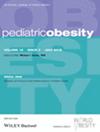Problematic social media use and overweight/obesity: explanatory pathway analysis of 124 667 in-school adolescents in 39 high-income countries
Abstract
Background
The relationship between adolescent problematic social media use (PSMU) and overweight/obesity and the potential explanatory pathways for this association are unclear. This study (1) examined the relationship between PSMU and overweight/obesity and (2) evaluated potential explanatory pathways for this association.
Methods
The data used in this study came from the 2018 Health Behaviour in School-aged Children (HBSC) survey. A sample of 124 667 in-school adolescents from 39 high-income countries was analysed. Sequential logistic regressions were used to estimate the association between PSMU and overweight/obesity. Pathway analysis using a non-parametric bootstrapping technique tested the hypothesized mediating roles.
Results
The multivariable logistic regressions indicated that higher problematic social media users were 1.11 times more likely to be overweight/obese compared with those who reported low PSMU (AOR = 1.11; 95% CI = 1.05–1.18). Our bootstrapping mediation analyses showed that PSMU indirectly influenced overweight/obesity through breakfast skipping, life satisfaction, family communication, self-rated health, and physical activity, accounting for 19.8% (β = 0.0068, Boots 95% CI = 0.0056–0.0074), 15.1% (β = 0.0050, Boots 95% CI = 0.0046–0.0056), 9.2% (β = 0.0031, Boots 95% CI = 0.0024–0.0038), 7.8% (β = 0.0024, Boots 95% CI = 0.001–0.004), and 5.2% (β = 0.0017, Boots 95% CI = 0.0014–0.0023), respectively, of the total effect.
Conclusion
To the best of our knowledge, this is the first study that used nationally representative data from multiple countries in high-income countries to examine the association between PSMU and overweight/obesity and potential explanatory pathways among school-going adolescents. This finding has important implications for public health interventions to reduce overweight/obesity rates among young people.

 求助内容:
求助内容: 应助结果提醒方式:
应助结果提醒方式:


